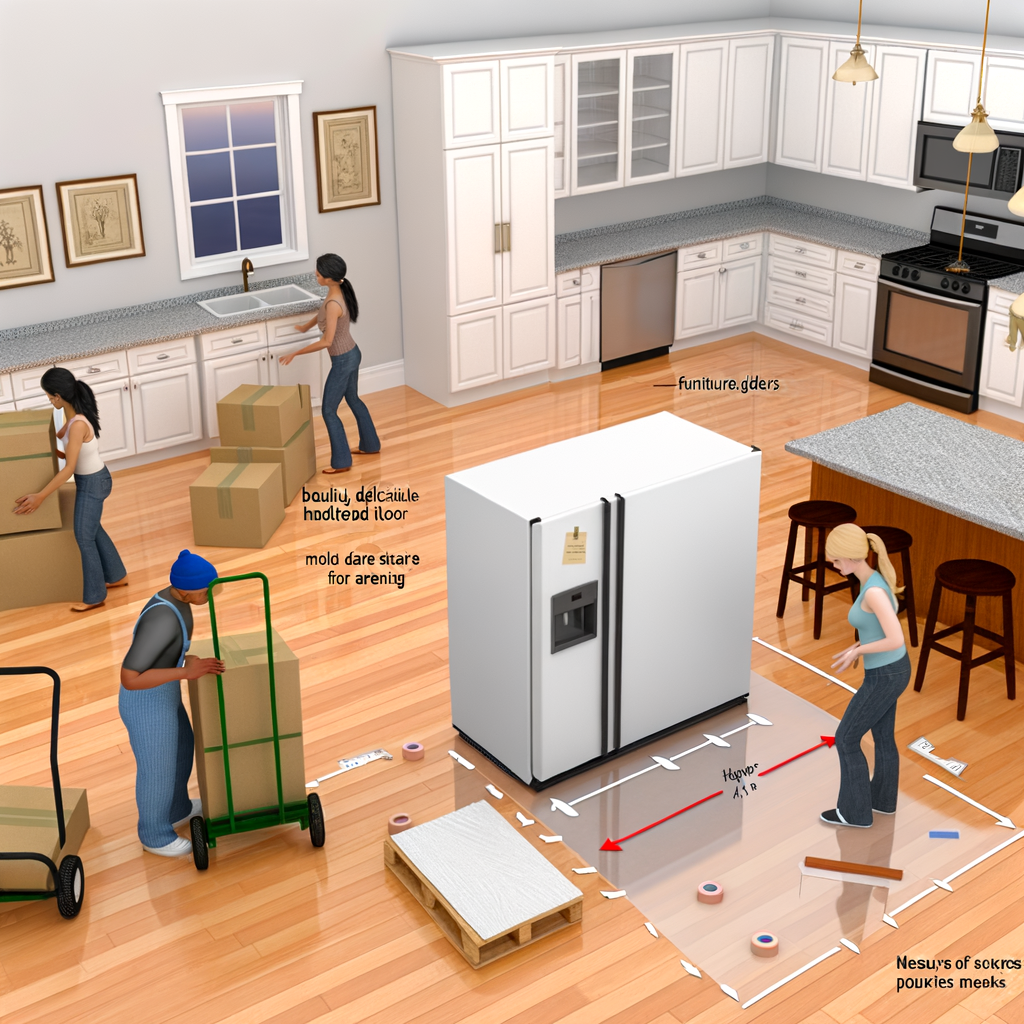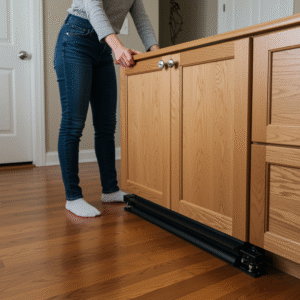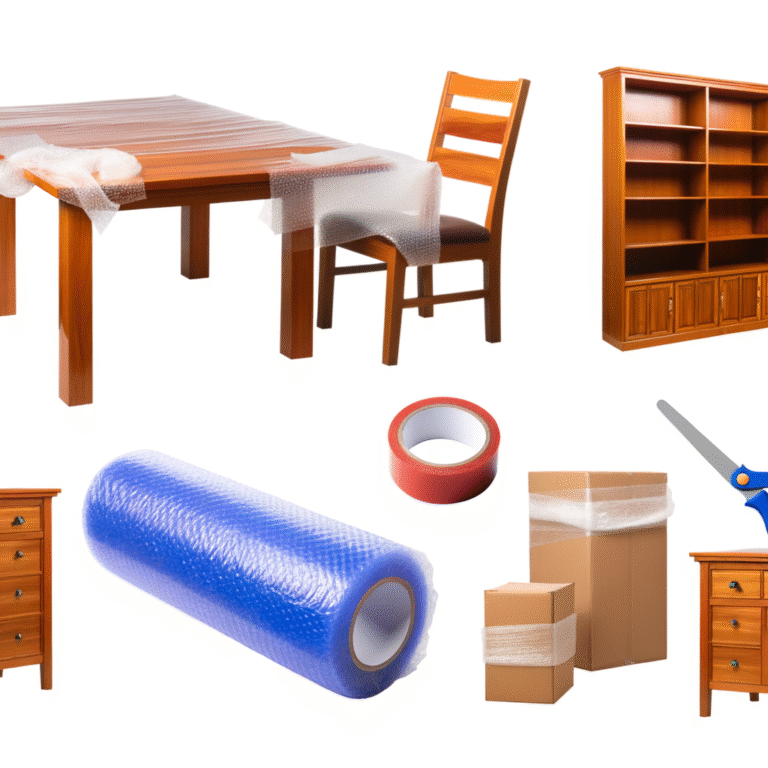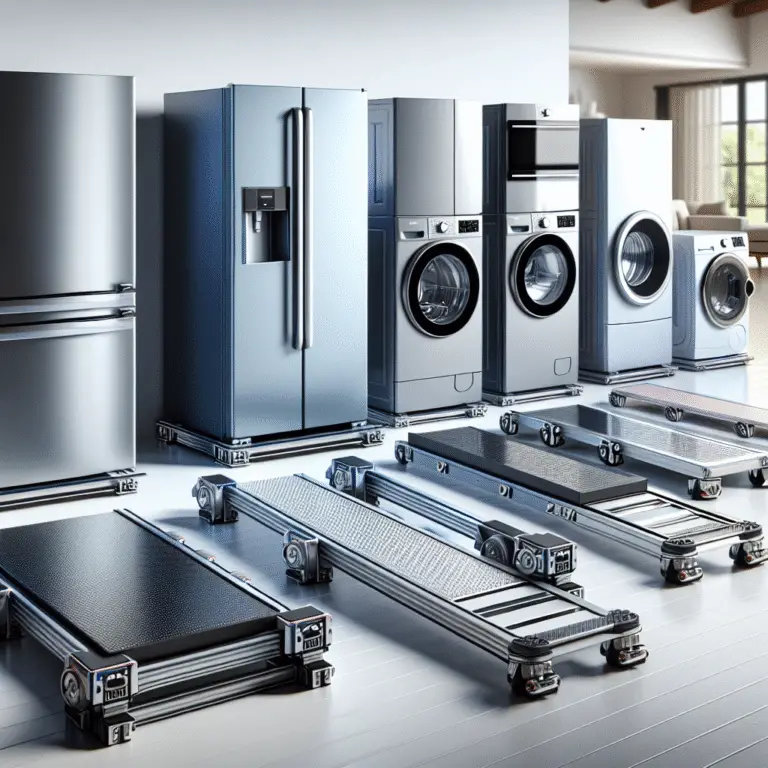Moving a Refrigerator Without Scratching Floors: Complete Guide
Moving a Refrigerator Without Scratching Floors: Complete Guide
Why Proper Refrigerator Moving Matters
Moving a refrigerator incorrectly can cause thousands of dollars in floor damage and appliance repairs. With the right techniques and tools, you can relocate your refrigerator safely while keeping your floors pristine and your appliance functioning perfectly.
1
Preparation Phase (30-60 Minutes)
Safety and Planning Assessment
Before touching your refrigerator, conduct a thorough assessment of your space, floor type, and available tools. This crucial step prevents 90% of common moving mishaps and ensures you have everything needed for a smooth relocation.
Essential Tools and Materials Gathering
Collect all necessary equipment including furniture sliders, moving blankets, a dolly or hand truck, and floor protection materials. Having everything ready prevents mid-move scrambling that often leads to accidents and damage.
Essential Moving Tools Checklist
- Furniture sliders or glides (appropriate for your floor type)
- Moving blankets or cardboard sheets for floor protection
- Appliance dolly or heavy-duty hand truck
- Moving straps or ropes for securing
- Work gloves with good grip
- Measuring tape for doorway clearance
Test your furniture sliders on a small area first. Different floor types (hardwood, laminate, tile) require specific slider materials. Felt works best on hard surfaces, while plastic sliders are ideal for carpets.
2
Floor Protection Setup (15-20 Minutes)
Creating Safe Pathways
Establish protected pathways using cardboard, moving blankets, or specialized floor runners. This creates a safe corridor for your refrigerator while distributing weight evenly across vulnerable surfaces like hardwood or luxury vinyl.
Strategic Slider Placement
Position furniture sliders under each corner of the refrigerator’s base. For heavier models, use additional sliders along the sides. This distribution prevents point pressure that can crack tiles or dent hardwood floors.
Floor-Specific Protection Strategies
Hardwood and Laminate Floors
Use felt furniture sliders and avoid dragging at all costs. Place moving blankets along the entire path and consider using a plywood runway for extra-heavy refrigerators. Never use plastic sliders on wood surfaces as they can cause scratching.
Tile and Stone Surfaces
Focus on protecting grout lines which are most vulnerable to cracking. Use rubber or felt sliders and move slowly to prevent sudden impacts. Place cardboard or masonite sheets over the entire pathway for maximum protection.
Vinyl and Linoleum Flooring
These surfaces are prone to gouging and tearing. Use the largest furniture sliders possible to distribute weight and never pivot or turn the refrigerator while it’s in contact with the floor. Consider using a dolly for the entire move on these delicate surfaces.
3
Safe Moving Execution (20-45 Minutes)
Proper Lifting and Tilting Techniques
Use proper body mechanics to slightly tilt the refrigerator and slide protection materials underneath. Always lift with your legs, keep your back straight, and work with a partner for refrigerators over 200 pounds. Never attempt to lift the entire unit off the ground.
Controlled Movement Strategy
Move slowly and deliberately, maintaining constant control. Push rather than pull when possible, and make wide turns to avoid sudden direction changes. Stop frequently to check that floor protection remains in place and sliders haven’t shifted.
Step-by-Step Moving Process
- Empty refrigerator completely and disconnect power 4+ hours before moving
- Remove or secure all removable parts (shelves, drawers, ice makers)
- Clean and defrost thoroughly to prevent water damage during transport
- Secure doors with moving tape or rope to prevent opening
- Position sliders under all four corners using the tilt method
- Test movement with small adjustments before full relocation
- Move along predetermined protected pathway at steady pace
- Remove sliders only after refrigerator reaches final position
Critical Errors That Damage Floors
- Dragging Without Protection: Never slide a refrigerator directly on floors, even for “just a few inches.” This is the #1 cause of scratching and gouging.
- Using Wrong Slider Types: Plastic sliders on hardwood or felt sliders on carpet will cause damage. Always match slider material to your floor type.
- Rushing the Process: Moving too quickly leads to loss of control, sudden impacts, and slider displacement that damages floors.
- Ignoring Weight Distribution: Concentrating weight on small contact points can crack tiles or create permanent dents in soft flooring.
- Skipping Floor Assessment: Not identifying vulnerable areas (like loose tiles or soft spots) beforehand leads to unexpected damage during the move.
For extra peace of mind on expensive floors, rent an appliance dolly from a hardware store. The $20-30 rental cost is minimal compared to potential floor repair expenses, and it makes the job significantly easier and safer.
4
Post-Move Inspection and Setup (15-30 Minutes)
Floor Damage Assessment
Immediately inspect all areas where the refrigerator was moved for any signs of damage. Look for scratches, dents, scuffs, or displaced tiles. Address any minor issues immediately with appropriate repair methods before they worsen.
Proper Refrigerator Positioning and Leveling
Position your refrigerator in its final location and ensure it’s level using adjustable feet. Allow proper clearance for ventilation and door opening. Wait at least 4 hours before plugging in to allow refrigerant to settle after the move.
Final Setup and Safety Checklist
- Check all pathways for any floor damage or debris
- Clean up all protective materials and moving supplies
- Level refrigerator using adjustable feet or leveling legs
- Ensure minimum clearance spaces around unit (check manual)
- Wait 4-6 hours before plugging in and turning on
- Test all functions including cooling, ice maker, and water dispenser
- Replace all shelves, drawers, and removable components
Move Your Refrigerator Like a Professional
With these proven techniques, you can relocate any refrigerator safely while keeping your floors in perfect condition. The right preparation, tools, and technique make what seems like an impossible task completely manageable.
Remember that patience and proper planning prevent 95% of moving-related accidents and damage. Take your time, use quality materials, and don’t hesitate to get help when needed.
Start your refrigerator move with confidence – your floors and your back will thank you for following this professional approach!













